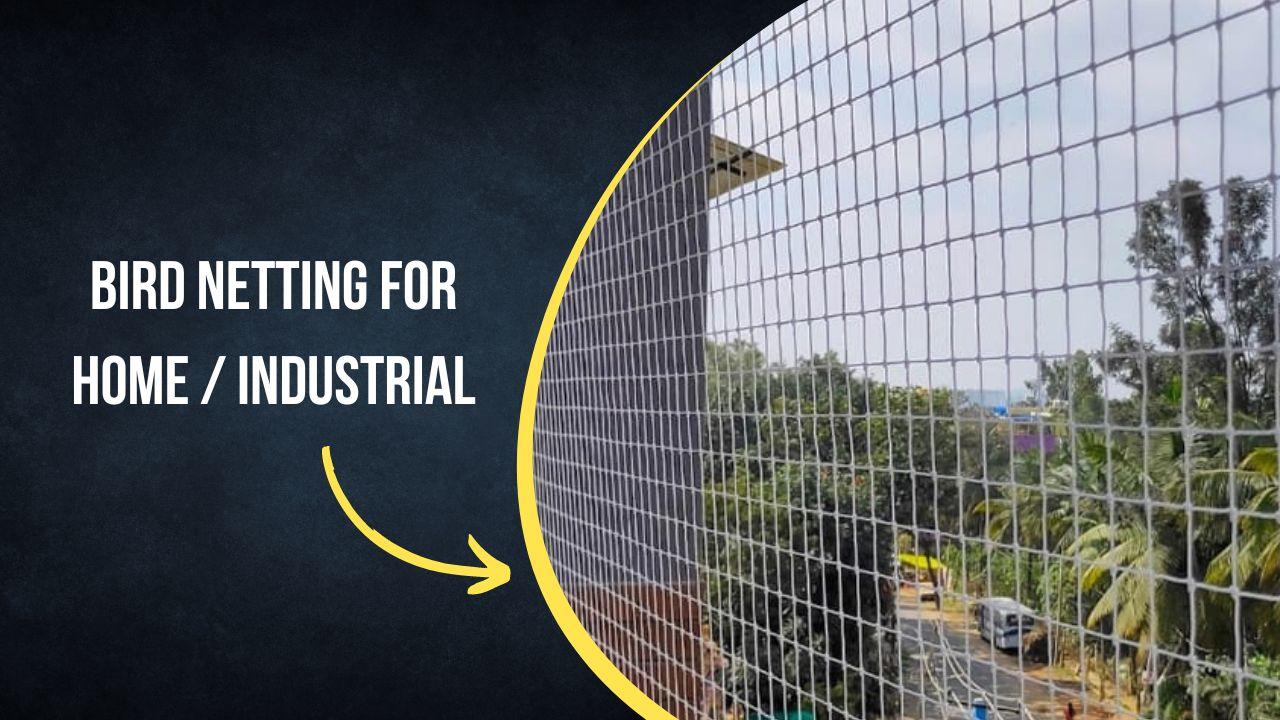Introduction
In the introduction, you can start by capturing the readers’ attention with a statement about the beauty and significance of birds. You can mention their melodic songs, vibrant colors, and their ecological role. Then, introduce the purpose of the blog post, which is to discuss bird netting as a solution for protecting gardens and properties.
Understanding the Need for Bird Netting
In this section, you should emphasize the growing conflicts between birds and human spaces. Birds, while delightful creatures, can sometimes cause damage to crops, gardens, and properties. You can mention instances of birds feeding on fruits or vegetables, pecking at seeds, or nesting in inconvenient areas. Additionally, discuss potential issues like property damage caused by bird droppings, which can be unsightly and corrosive. Highlight the need for finding humane and effective solutions that balance the protection of human interests with bird conservation.
What is Bird Netting?
Here, provide a clear definition of bird netting. Explain that bird netting is a physical barrier made of durable materials, usually plastic or nylon. It is designed to create a mesh-like structure that prevents birds from accessing specific areas, such as gardens, crops, or buildings. You can mention that bird netting is a widely used method due to its effectiveness and versatility.
Types of Bird Netting
Discuss the different types of bird netting available in the market. Plastic mesh netting and heavy-duty nylon netting are the most common options. Describe the variations in mesh sizes and strengths. For example, smaller mesh sizes are effective for deterring smaller birds, while larger mesh sizes may be necessary to protect against larger species. Explain that choosing the right type of bird netting depends on the specific bird species and the area you want to protect.
Benefits of Bird Netting
In this section, highlight the advantages of using bird netting to protect gardens and properties:
-
Protecting crops and gardens
Explain how bird netting acts as a barrier that prevents birds from reaching fruits, vegetables, and other plants. By keeping birds away, it reduces the risk of crop damage and loss.
-
Preserving property
Discuss how bird netting can be used to deter birds from nesting or roosting in buildings, sheds, or other structures. By preventing birds from entering such areas, it helps preserve the integrity of the property and minimizes the need for costly repairs.
-
Reducing health risks
Mention that some birds carry diseases, and their droppings can pose health risks to humans. Bird netting acts as a preventive measure by deterring birds from high-traffic areas, reducing the chances of disease transmission and the accumulation of droppings.
-
Maintaining aesthetic appeal
Emphasize that bird netting is transparent and doesn’t obstruct visibility. It allows you to enjoy your surroundings without hindrance, ensuring an uninterrupted view of your garden or property.
Installation and Maintenance Tips
Provide readers with practical guidance on installing and maintaining bird netting:
-
Installation
Provide step-by-step instructions for installing bird netting. Mention the tools required, such as zip ties, poles, or hooks. Explain how to properly tension the netting and secure it to the desired areas. You can include tips on measuring and cutting the netting to fit the space accurately.
-
Maintenance
Discuss regular maintenance practices for bird netting. Advise readers to check the netting periodically for any damage, such as holes or tears, and promptly repair or replace it if needed. Additionally, recommend cleaning the netting to remove debris or bird droppings, as these can accumulate over time and compromise the effectiveness of the netting.
Alternative Bird Deterrents:
In this section, briefly mention other non-lethal methods to deter birds apart from bird netting:
-
Scare devices:
Talk about devices such as scarecrows, reflective tape, or decoys that mimic natural predators. Mention that these methods can be effective, but they may require regular repositioning or rotation to maintain their effectiveness.
-
Reflective materials:
Explain that shiny or reflective surfaces, like reflective bird diverters or metallic streamers, can startle birds and discourage them from landing or approaching an area. Mention that these methods work best when combined with other deterrents.
-
Sonic repellents:
Discuss the use of devices that emit sounds or ultrasonic frequencies that are unpleasant to birds. Explain that these repellents can be effective, but they should be used with caution, as some may cause disturbances to humans or other animals.
Conclusion
In the conclusion, summaries the main points discussed in the blog post. Highlight the benefits of bird netting in protecting gardens and properties while maintaining a balance between human needs and bird conservation. Encourage readers to explore bird netting as a humane and effective solution to mitigate conflicts between birds and human spaces, and express the importance of fostering harmony between humans and nature.
Remember to expand on each section, provide relevant examples or anecdotes, and maintain a conversational tone throughout the blog post to engage your readers effectively.
Get Support
sales@rcnettingsolutions.com
Office Timings
Mon – Fri(9AM – 7PM)
Address
- Ahmedabad, Gujrat-382350
- +91-9081409194
- rcnettingsolutions@gmail.com
